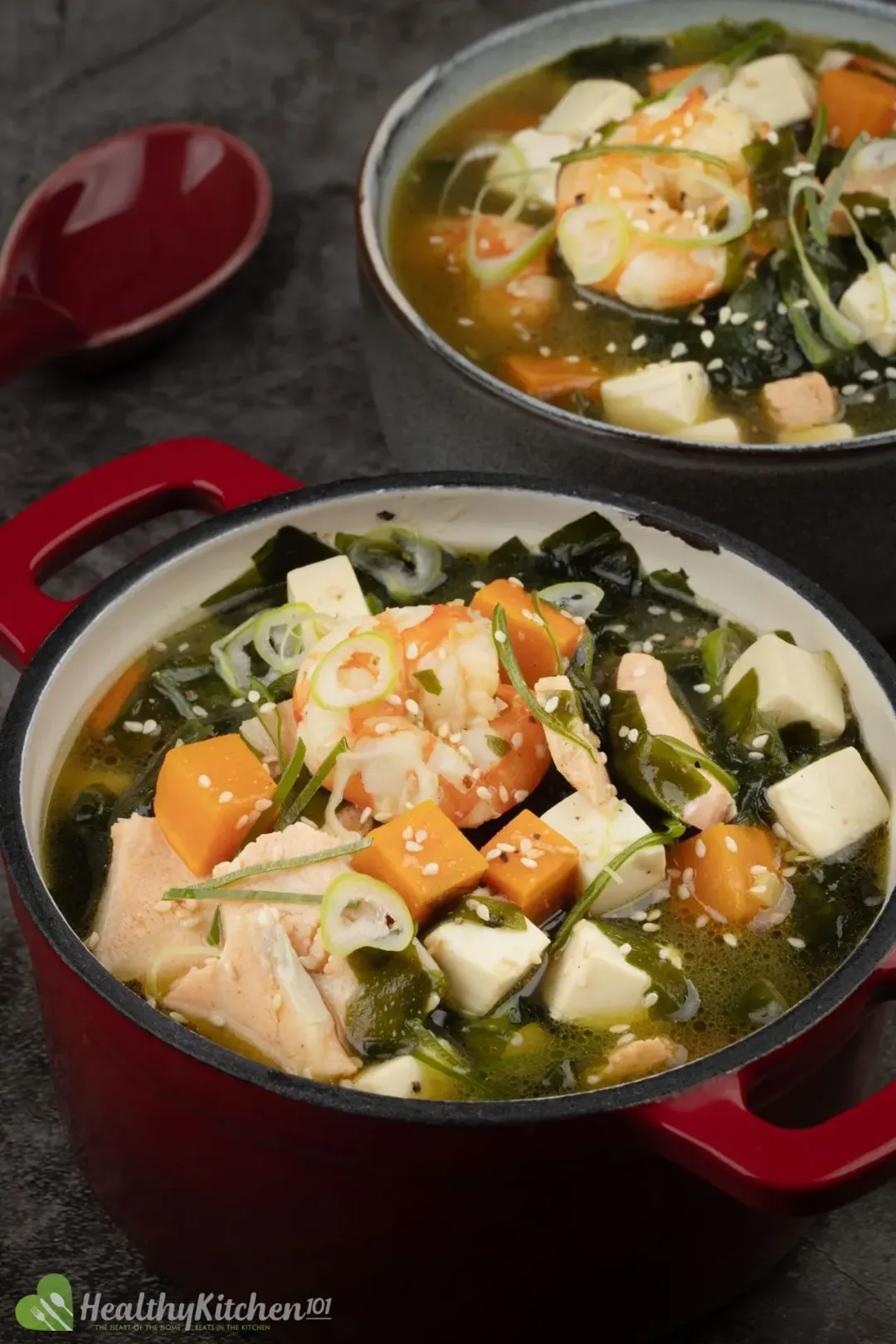Warm, comforting, and pleasantly savory— this rounds up this miso soup recipe in a nutshell.
In this soup, you’ll get the soft tofu, and refreshing, subtle-tasting salmon and shrimp in every scoop. It’s specially made for when you feel like treating yourself at home after a busy day’s work.
What Is Miso Soup?
Miso soup (味噌汁) is a traditional Japanese soup that was created 1,300 years ago by Buddhist priests. This soup is made primarily of miso paste, tofu, fermented products, and various vegetables.
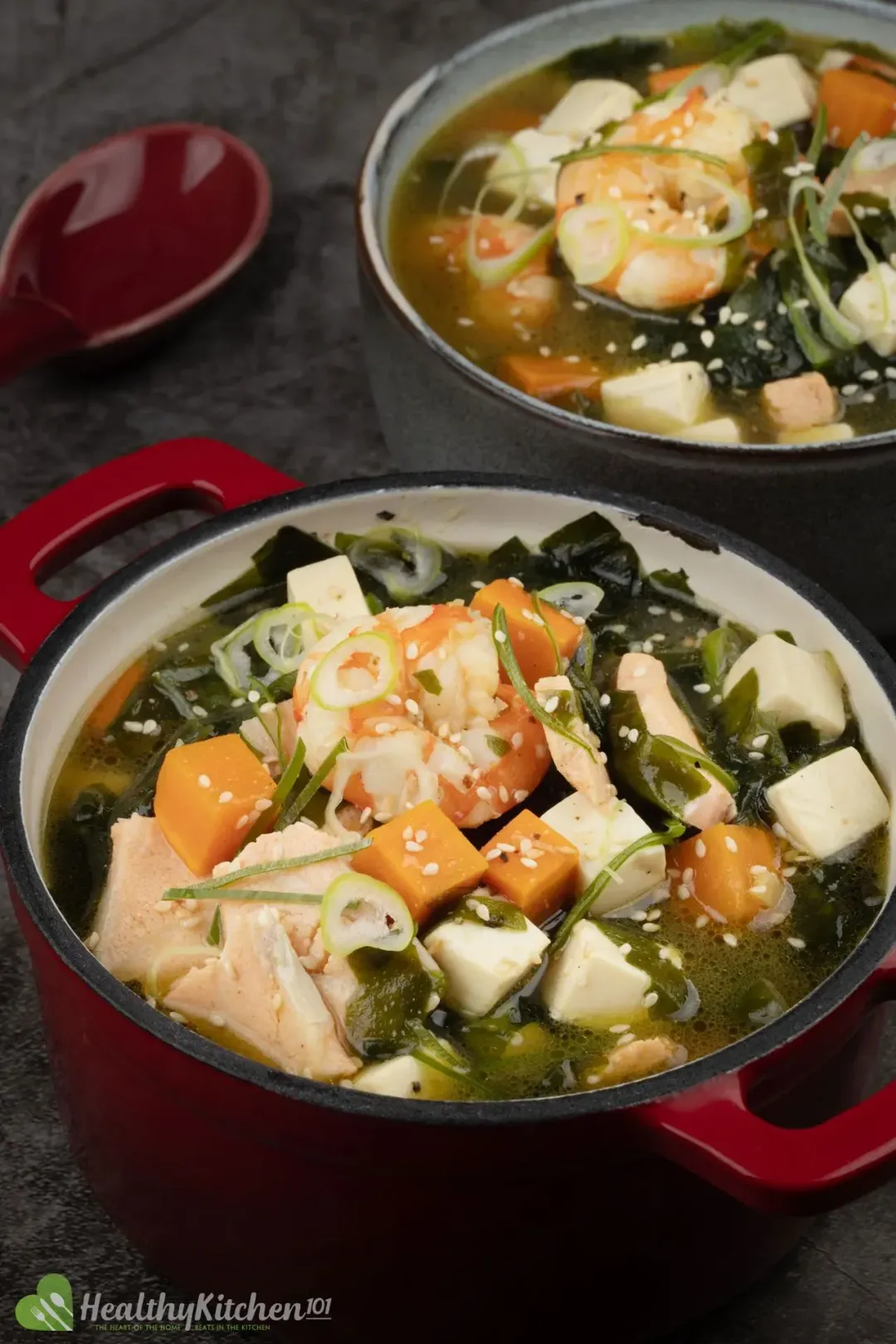
Different regions and customs have their own different ways of preparing a bowl of miso soup. Today, This soup is a warm and comforting staple that’s enjoyed in every part of Japan.
Is Our Recipe Healthy?
For Japanese people, miso soup is considered a nourishing soup that can be enjoyed in everyone’s daily eating routines. It’s easy to eat, quick to make, and is packed with nutrients from fresh ingredients— especially when homemade.
So yes, it is healthy.
This soup is rich in protein and minerals as it’s packed with seafood and green vegetables. You’ll also get antioxidants and beneficial bacteria for your gut from the fermented products.
If this is making you fancy more Asian soup, take a look at our winter melon meatball soup which is also a delight. Though the two soups follow different methods, they produce the same sort of feeling as both are healthy and enjoyable.
Calories
You’ll get 111 calories from one serving of this miso soup. This dish is also low in carbohydrates with only 3.7 grams per serving, making it ideal to pair with a more carbohydrate dense main or for those who are following low-carb diets.
Main Ingredients
Traditionally, the ingredients for a miso soup are the seasonal products that people had on-hand at the time the soup is made.
But generally, it always has bold-flavored and light-tasting ingredients combined together. This blend creates a harmony of flavor and explains the contrasting color and texture in every scoop.
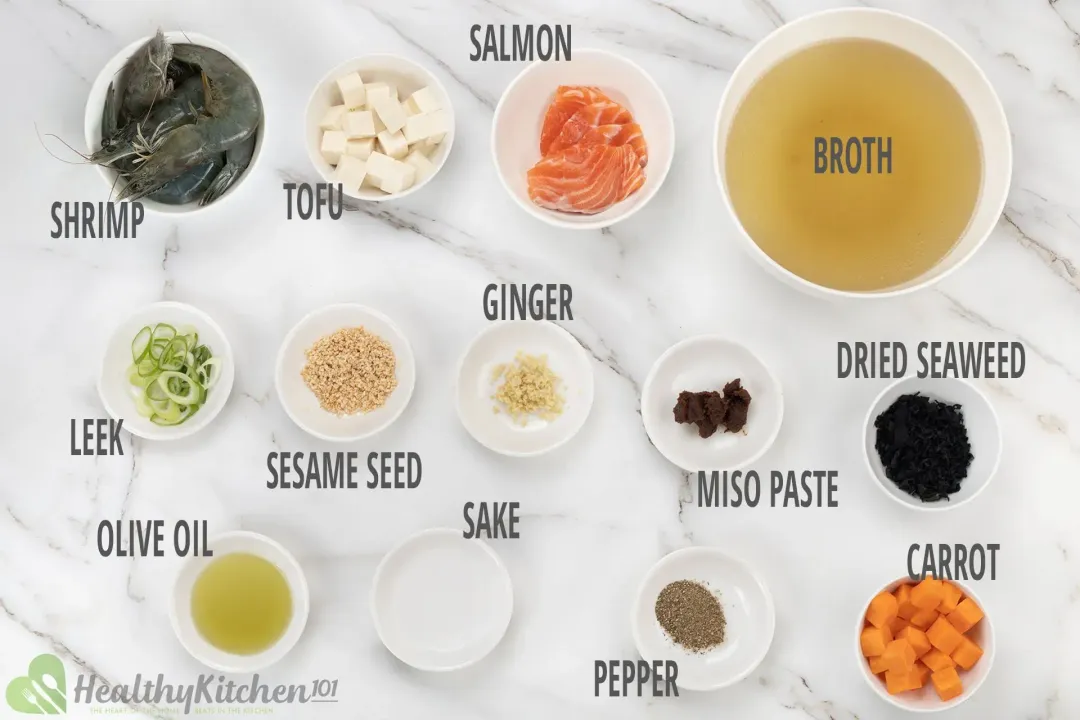
A few of the ingredients include:
1. Red Miso Paste
There’s no doubt that miso paste is the central ingredient for this miso soup recipe. It plays an indispensable role in the soup’s flavor.
Miso paste is a fermented soybean-based paste that’s mostly used as a condiment and mixed with soup stock to create this soup. It’s high in sodium and protein with an intense and salty flavor.
Our this recipe calls for red miso paste (also known as akamiso – 赤味噌). Red miso is much stronger-tasting, compared to other varieties of miso paste.
Red miso, similar to other miso, is produced by fermenting soybeans with salt and several other ingredients. It delivers an umami flavor and a significant pungency.
Different fermentation processes result in different flavors, so if you find red miso too strong, don’t worry. You can try switching it with the milder and sweeter white miso or yellow miso for a more earthy-flavored soup.
2. Tofu
Miso soup is not only bursting in flavors but also comes with diverse textures. Soft and spongy cubes of tofu bring excellent mouthfeel to miso soup— they perfectly balance the umami flavor from the seafood and miso paste.
3. Seaweed
Nowadays, most grocery stores stock dried seaweed. Before cooking it in the broth, you’ll need to soak it in cold water for 5 minutes so it softens and fully expands.
So how do you bring these delicious ingredients together?
How Long Does Miso Soup Last?
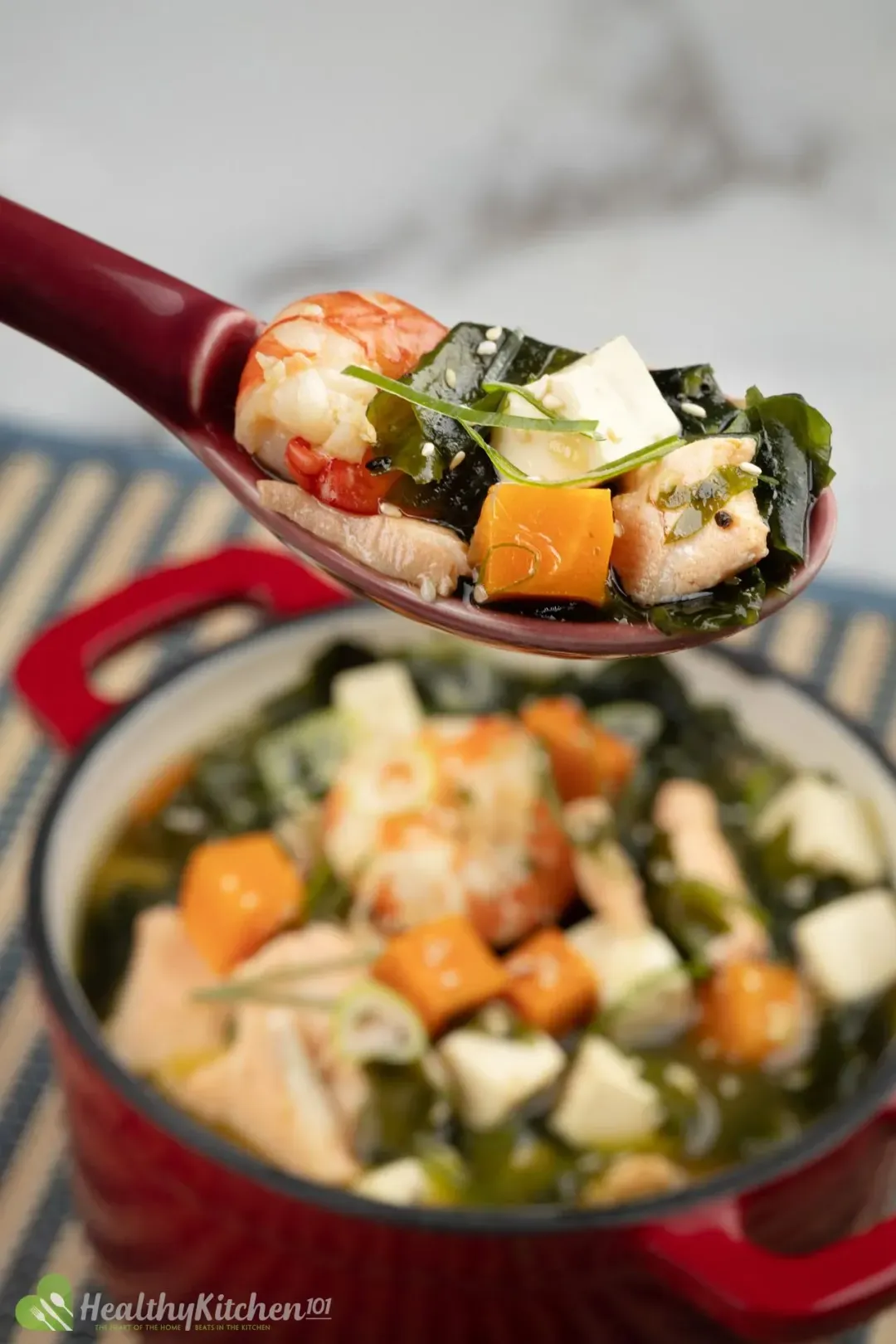
When left on the counter, miso soup remains edible within 4 hours after it’s cooked. If stored in the fridge, can last up to 2 days.
Whatever the case is, you will always need to rewarm the leftover miso soup before eating for the best possible flavor.
Check out our best soup recipes for more delicious soup.
Can You Freeze It?
You can transfer miso soup to glassware containers and put them in the freezer for up to 2-3 months. However, we don’t really recommend freezing the soup that long.
Miso paste itself can already last in the fridge for months, and this recipe takes only 15-20 minutes to make. So here’s our advice for a fresh and appetizing miso soup that’s convenient and time-saving:
First, you freeze the prepared ingredients for your this soup separately so they’re ready to use whenever the need arises. Whenever you feel like adding it to your meals, make a fresh batch of miso soup from the products you stored in your freezer.
The cooking time will be about the same as the time you’d have to spend defrosting a frozen serving of it. But of course, everything tastes better when cooked fresh!
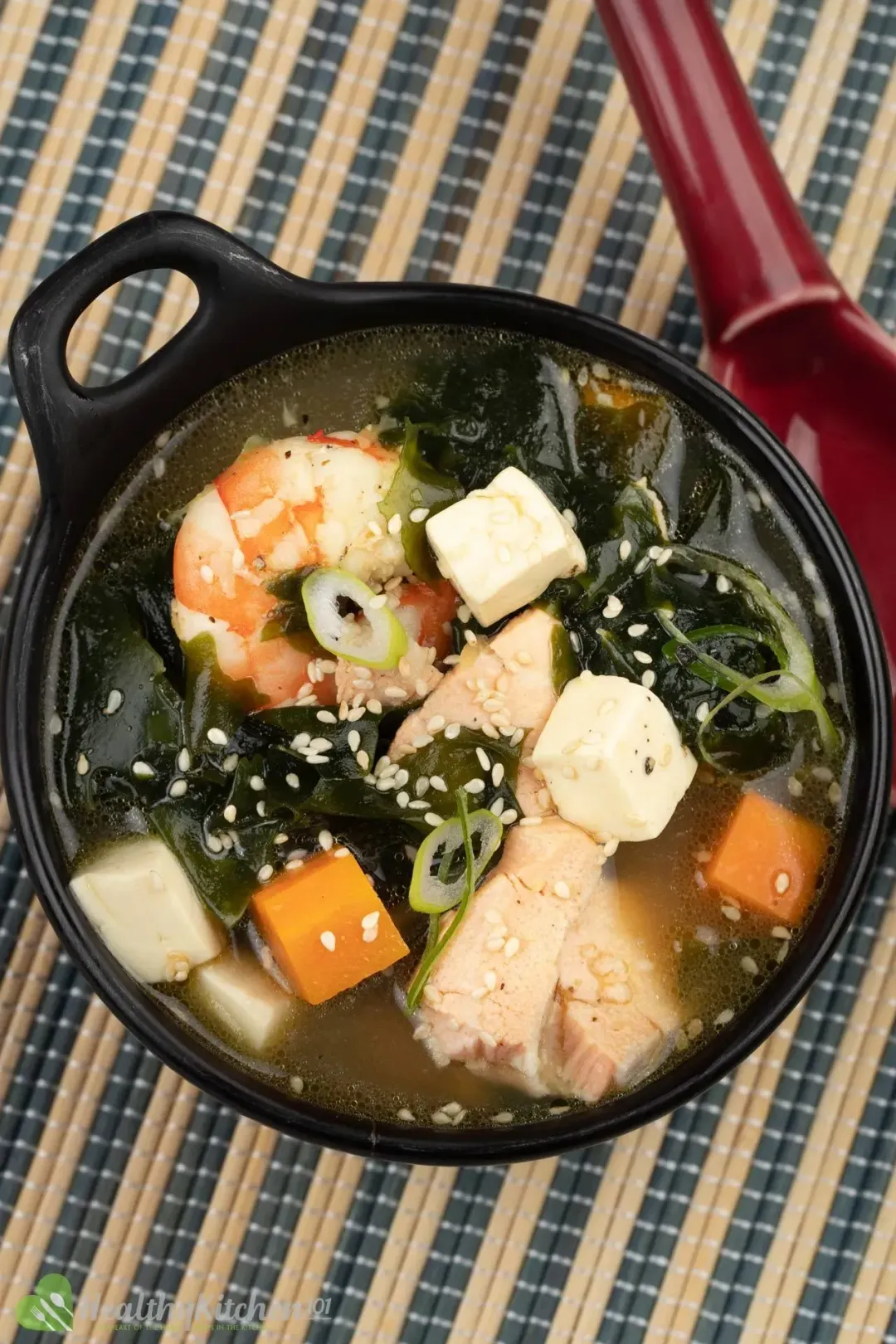
If you love this recipe, you may also love our Salmon Soup. For more recipes on salmon this best salmon recipes have a bunch of ideas.
Miso Soup Recipe
This miso soup recipe will give you a nourishing soup that's great to eat, quick to make, and can be easily added to everyone's daily eating routines. There's nothing better than homemade!
- cook TIME 15 mins
- prep TIME 10 mins
- total TIME 25 mins
- COURSE Side Dish
- CUISINE Asian
- SERVINGS servings
- CALORIES 111 kcal
INGREDIENTS
- 3 oz boneless salmon (filleted)
- 2 oz raw shrimp (whole)
- 2/3 tbsp dried seaweed
- 3 oz soft tofu (cubed)
- 2 oz carrot (cubed)
- 3/4 tbsp red miso paste
- 1/2 tsp ground black pepper
- 3 cups unsalted chicken broth
- 2 tbsp leek (chopped)
- 1 tsp ginger (grated)
- 1/2 tbsp sake
- 2/3 tbsp olive oil
- 2 tsp sesame seeds
INSTRUCTIONS
Rinse, peel, and devein 2 oz shrimp. Set aside.

Soak 2/3 tbsp dried seaweed in cold water for 5 minutes. Drain after it fully expands. Set aside.
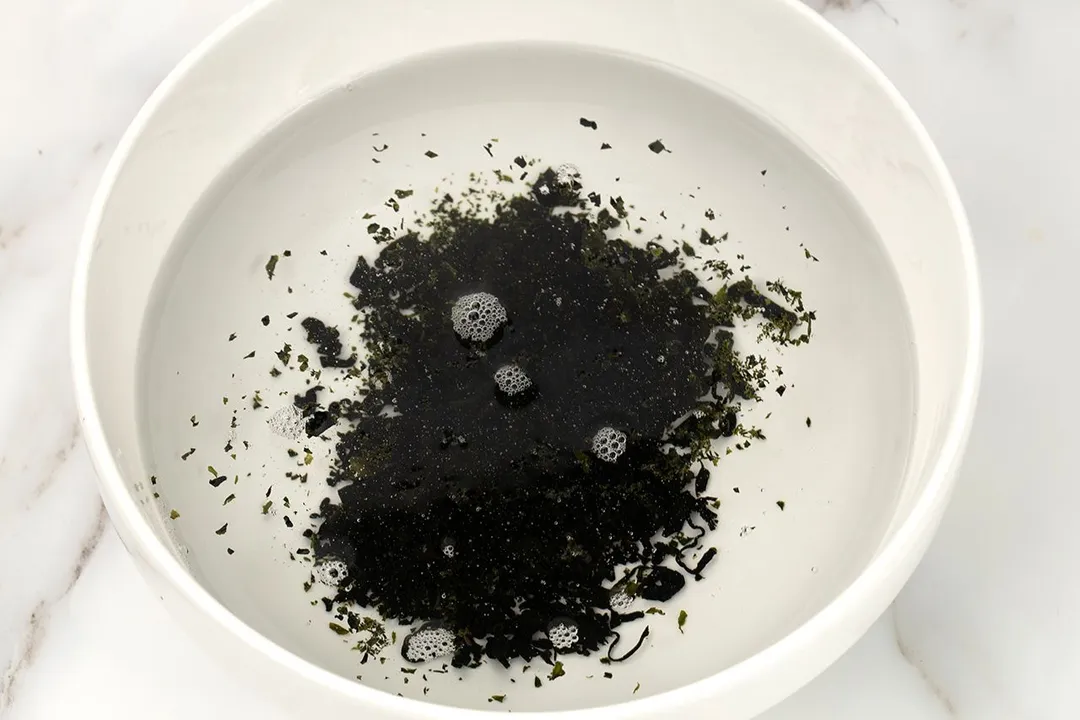
In a saucepan, heat 2/3 tbsp olive oil over medium heat. Stir-fry 1 tsp ginger and 2 oz carrots in a couple of minutes.

Pour 3 cup chicken broth into the saucepan and bring it to a boil.
Add 3/4 tbsp miso paste. Whisk to get the clumps out, until it's completely dissolved.
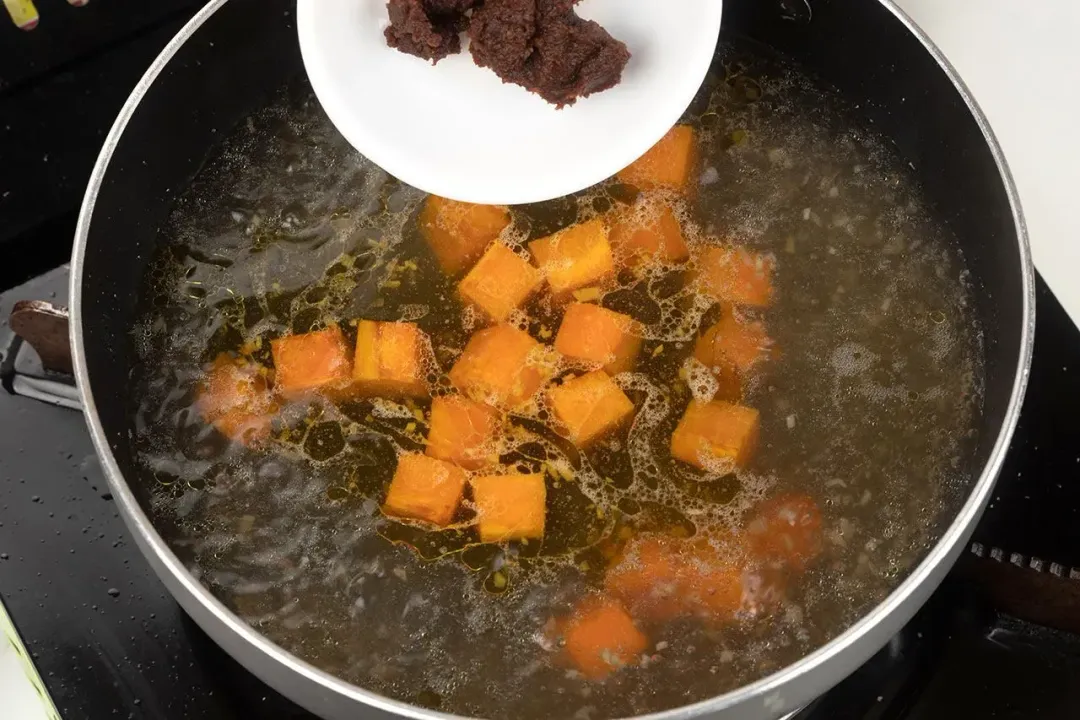
Continue to add the shrimp, 3 oz salmon, and the fully expanded seaweed to the saucepan. Let it cook for 1 minute.

Turn the heat down to low, add 3 oz tofu and 1/2 tbsp sake. Let simmer for a minute.

Turn off the heat. Sprinkle 1/2 tsp ground black pepper, 2 tsp sesame seeds, and 2 tbsp leek on top.
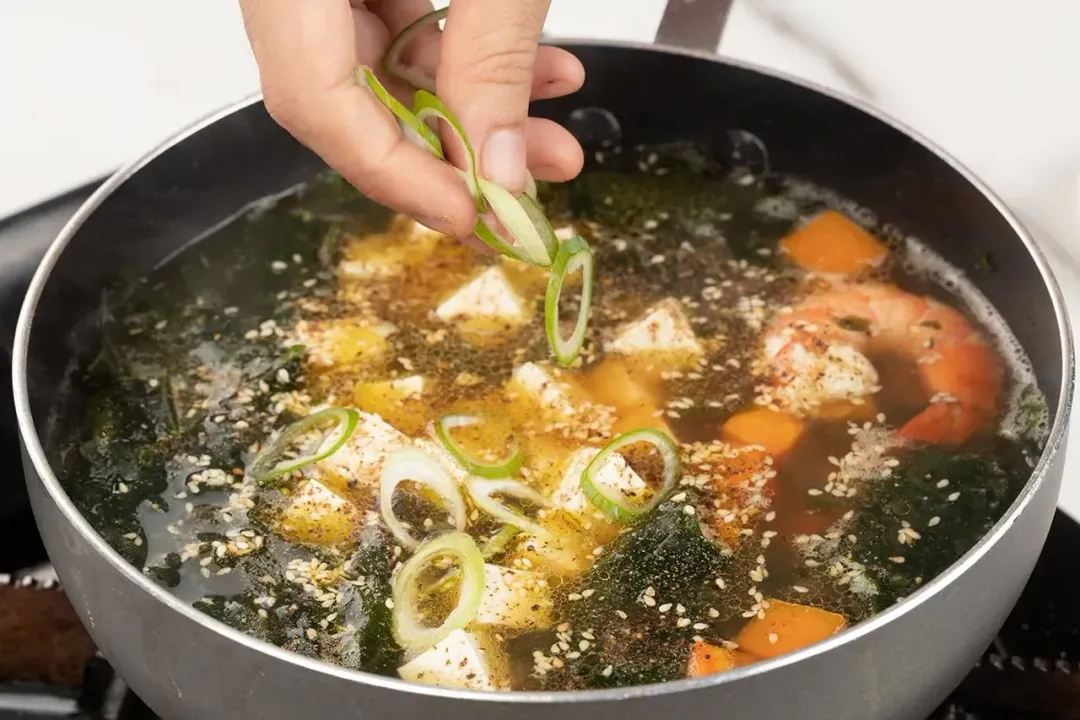
Serve hot.
NUTRITION
Tuyet Pham
Head Chef, Culinary ConsultantLuna Regina
Writer, AuthorLizzie Streit, MS, RDN, LD
Nutrition Reviewer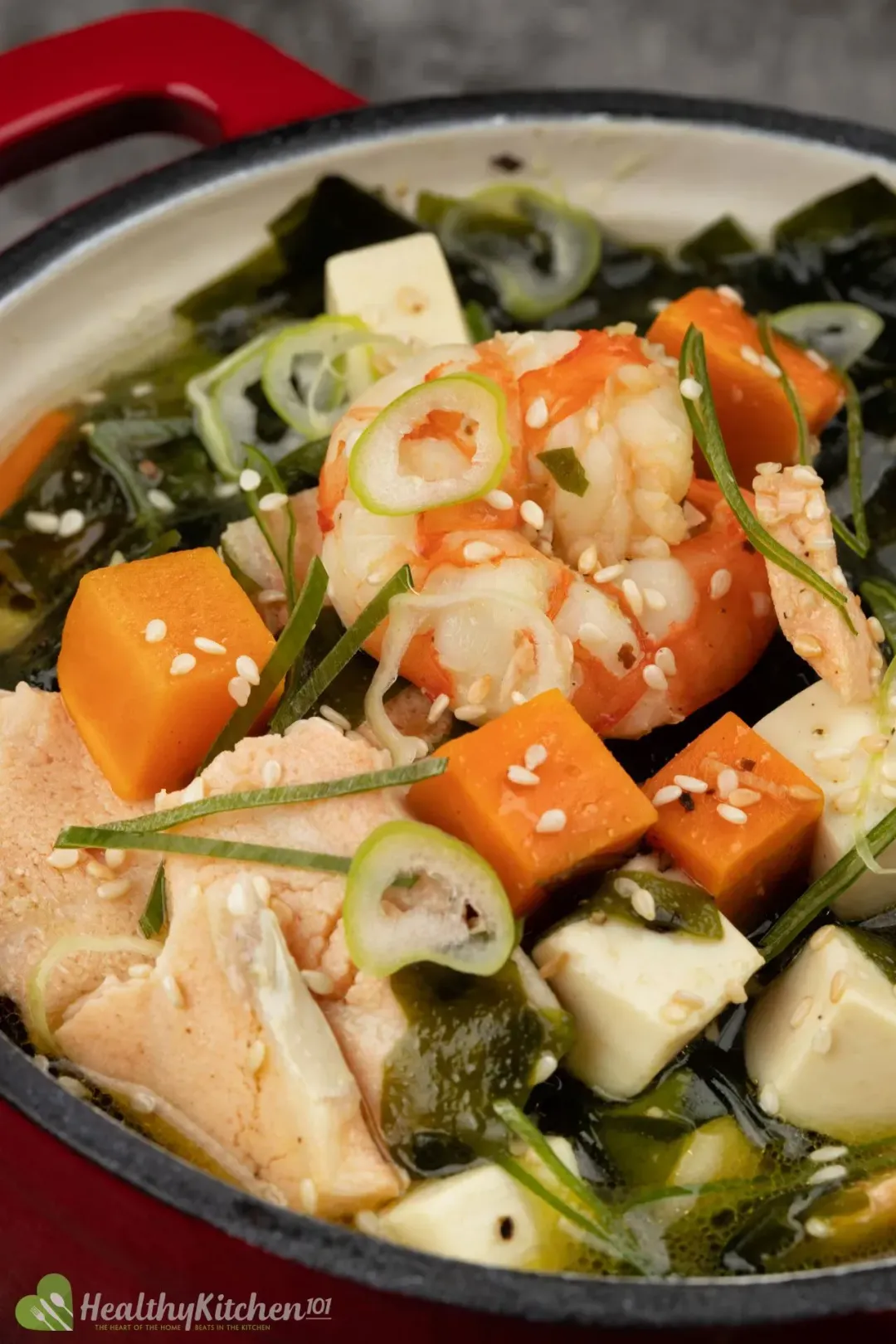
- MolleroniI highly recommend trying this recipe for a delicious and healthy soup.
